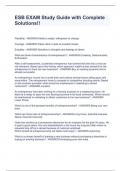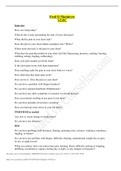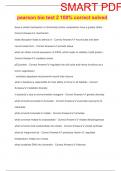Samenvatting
Samenvatting Medicinal Chemistry
- Instelling
- Vrije Universiteit Amsterdam (VU)
Summary study book an introduction to medicinal chemistry of Graham Patrick (H1,2,3,4,5,8,10,21) - ISBN: 9780199697397, Edition: 5e druk, Year of publication: -
[Meer zien]














